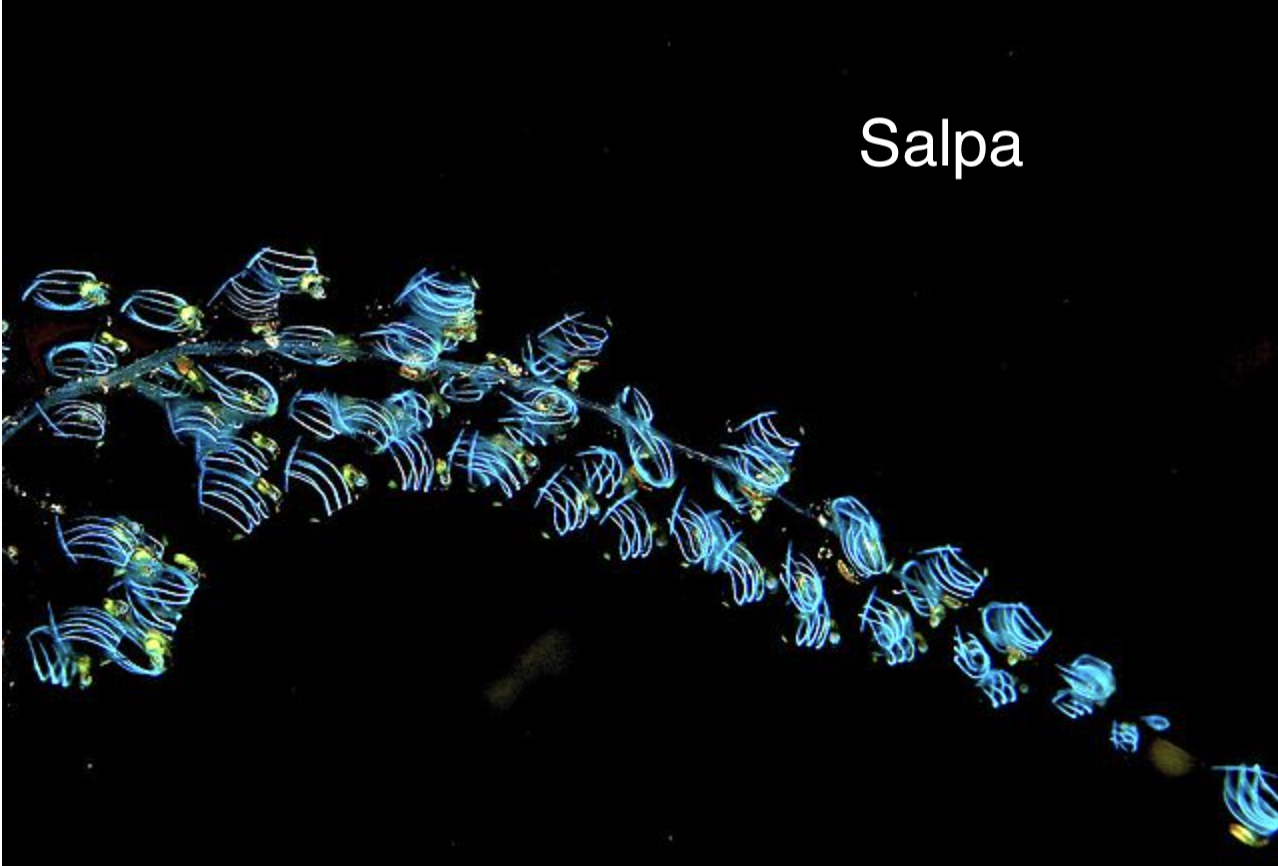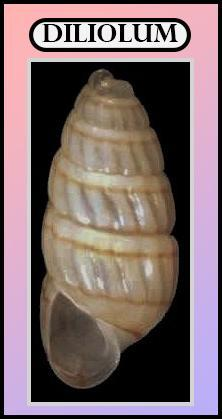Answer
399.9k+ views
Hint: These organisms are part of the Chordata, a phylum which incorporates all animals with dorsal nerve cords and notochords. They show retrogressive metamorphosis. The nerve cord existing in the larva is replaced by a dorsal ganglion in adults.
Complete answer:
Sapla and Doliolum belong to Urochordata. Urochordata have dorsal nerve cords and notochords. The notochord is present only in the larval tail and is replaced by a dorsal ganglion in adults. Salpa is a barrel- shaped, planktonic tunicate. They move by contracting, thereby pumping water through its gelatinous body, one of the most efficient examples of jet propulsion in the animal kingdom. Doliolum is a genus of tunicates (a marine invertebrate animal), the members of which move via jet propulsion. They have dorsal nerve cords and notochords.

The other characteristics of Urochordata are:
- They are found in the marine environment.
- They are sessile and filter- feeders.
- The adults are fixed to the substratum.
- The larva can move and undergo metamorphosis.
- The body of an adult is surrounded inside a tunic made up of cellulose - like a substance known as tunicin.

- Notochord can be identified only in the larval stage and disappears in adults. The nerve cord existing in the larva is replaced by a dorsal ganglion in adults.
So, the correct answer is ‘Urochordata’.
Note: Urochordata is also known as tunicates. Some tunicates stay as solitary individuals, but others replicate by budding and become colonies. Salps are closely related to the tunicate groups Doliolida and Pyrosoma, as well as to other bottom- living tunicates.
Complete answer:
Sapla and Doliolum belong to Urochordata. Urochordata have dorsal nerve cords and notochords. The notochord is present only in the larval tail and is replaced by a dorsal ganglion in adults. Salpa is a barrel- shaped, planktonic tunicate. They move by contracting, thereby pumping water through its gelatinous body, one of the most efficient examples of jet propulsion in the animal kingdom. Doliolum is a genus of tunicates (a marine invertebrate animal), the members of which move via jet propulsion. They have dorsal nerve cords and notochords.

The other characteristics of Urochordata are:
- They are found in the marine environment.
- They are sessile and filter- feeders.
- The adults are fixed to the substratum.
- The larva can move and undergo metamorphosis.
- The body of an adult is surrounded inside a tunic made up of cellulose - like a substance known as tunicin.

- Notochord can be identified only in the larval stage and disappears in adults. The nerve cord existing in the larva is replaced by a dorsal ganglion in adults.
So, the correct answer is ‘Urochordata’.
Note: Urochordata is also known as tunicates. Some tunicates stay as solitary individuals, but others replicate by budding and become colonies. Salps are closely related to the tunicate groups Doliolida and Pyrosoma, as well as to other bottom- living tunicates.
Recently Updated Pages
What is pericarp class 10 biology CBSE

Define external fertilization Mention its disadvan class 10 biology CBSE

Percolation tank is constructed to impound A Runoff class 10 biology CBSE

In which region nerve impulses are transmitted and class 10 biology CBSE

Define totipotency class 10 biology CBSE

Which pyramid is always upright can never be inverted class 10 biology CBSE

Trending doubts
Difference Between Plant Cell and Animal Cell

Give 10 examples for herbs , shrubs , climbers , creepers

Difference between Prokaryotic cell and Eukaryotic class 11 biology CBSE

Fill the blanks with the suitable prepositions 1 The class 9 english CBSE

Name 10 Living and Non living things class 9 biology CBSE

Change the following sentences into negative and interrogative class 10 english CBSE

Fill the blanks with proper collective nouns 1 A of class 10 english CBSE

Select the word that is correctly spelled a Twelveth class 10 english CBSE

Write the 6 fundamental rights of India and explain in detail



